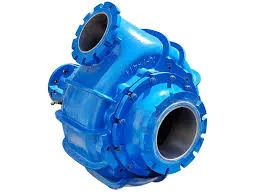Belarusian
- Afrikaans
- Albanian
- Amharic
- Arabic
- Armenian
- Azerbaijani
- Basque
- Belarusian
- Bengali
- Bosnian
- Bulgarian
- Catalan
- Cebuano
- Corsican
- Croatian
- Czech
- Danish
- Dutch
- English
- Esperanto
- Estonian
- Finnish
- French
- Frisian
- Galician
- Georgian
- German
- Greek
- Gujarati
- Haitian Creole
- hausa
- hawaiian
- Hebrew
- Hindi
- Miao
- Hungarian
- Icelandic
- igbo
- Indonesian
- irish
- Italian
- Japanese
- Javanese
- Kannada
- kazakh
- Khmer
- Rwandese
- Korean
- Kurdish
- Kyrgyz
- Lao
- Latin
- Latvian
- Lithuanian
- Luxembourgish
- Macedonian
- Malgashi
- Malay
- Malayalam
- Maltese
- Maori
- Marathi
- Mongolian
- Myanmar
- Nepali
- Norwegian
- Norwegian
- Occitan
- Pashto
- Persian
- Polish
- Portuguese
- Punjabi
- Romanian
- Russian
- Samoan
- Scottish Gaelic
- Serbian
- Sesotho
- Shona
- Sindhi
- Sinhala
- Slovak
- Slovenian
- Somali
- Spanish
- Sundanese
- Swahili
- Swedish
- Tagalog
- Tajik
- Tamil
- Tatar
- Telugu
- Thai
- Turkish
- Turkmen
- Ukrainian
- Urdu
- Uighur
- Uzbek
- Vietnamese
- Welsh
- Bantu
- Yiddish
- Yoruba
- Zulu
Telephone: +86 13120555503
Email: frank@cypump.com
Каст . 17, 2024 16:42 Back to list
Comparative Study of Vertical Turbine, Mixed Flow, and Propeller Pump Performance
Understanding Vertical Turbine, Mixed Flow, and Propeller Pumps
Pumping systems play a crucial role in various industrial, municipal, and agricultural applications. Among the myriad types of pumps available, vertical turbine pumps, mixed flow pumps, and propeller pumps stand out due to their specific designs and functionalities. Understanding the differences and applications of these pumps can help engineers and operators optimize fluid transfer processes effectively.
Vertical Turbine Pumps
Vertical turbine pumps are designed to lift water from deep underground sources, making them ideal for applications where the water table is significantly below ground level. These pumps are characterized by their vertical orientation, where the motor is typically positioned above the surface while the pump itself is submerged in the water. This design allows for long vertical shafts to connect the motor to the pump impeller located at the bottom.
The construction of vertical turbine pumps generally involves multiple stages of impellers, which are arranged along the shaft. Each stage increases the pressure of the pumped fluid, allowing for substantial lift capabilities, often exceeding hundreds of feet. These pumps are highly efficient and are commonly used in applications such as irrigation, groundwater extraction, and municipal water supply systems.
The versatility of vertical turbine pumps also allows them to be configured for different flow and head requirements
. Various impeller designs can be customized to improve flow dynamics and efficiency, making them suitable for different fluid types, including clean water and slightly contaminated fluids.Mixed Flow Pumps
Mixed flow pumps represent a hybrid mechanism that incorporates features of both centrifugal and axial flow pumps. In these pumps, the fluid enters the impeller axially and exits radially, resulting in a mixed flow pattern. This unique design allows for a balance between high flow rates and moderate lifting capabilities, making mixed flow pumps versatile for various applications.
vertical turbine mixed flow and propeller pumps

The primary advantage of mixed flow pumps is their ability to efficiently handle larger volumes of fluid while providing adequate pressure for moderate lift. They are often used in applications such as flood control, water transfer, and irrigation systems. The construction of mixed flow pumps typically includes a series of propellers or impellers that can be adapted for specific flow rates and pressure requirements.
Mixed flow pumps can be installed horizontally or vertically, depending on the application and space considerations. Their adaptability makes them suitable for both industrial and agricultural needs, providing reliable performance under varying conditions.
Propeller Pumps
Propeller pumps are another type of pumping solution characterized by their straightforward design and consistent flow output. The main component of a propeller pump is a propeller, which consists of blades that rotate to create a flow of liquid. Unlike centrifugal pumps, where the fluid is moved through a volute or casing, propeller pumps rely on the propeller’s blades to push water directly.
These pumps are particularly effective for applications where high flow rates are required without the need for significant pressure increases. They are commonly used in wastewater treatment, irrigation, and cooling applications. One of the key benefits of propeller pumps is their efficiency in moving large volumes of water at lower head pressures, making them ideal for surface water applications and flood control.
Propeller pumps can also be installed in a vertical or horizontal orientation, and they may feature varying numbers of blades depending on the required performance characteristics. This flexibility enables customization for specific tasks, whether it be for handling clean water or more viscous fluids.
Conclusion
In conclusion, vertical turbine, mixed flow, and propeller pumps each serve unique purposes within the fluid transfer landscape. Their design characteristics make them suitable for a wide range of applications, from deep groundwater extraction to surface water management. By understanding the distinct advantages and functionalities of these pump types, engineers and operators can select the most appropriate solutions for their specific needs, leading to increased efficiency, reliability, and cost-effectiveness in fluid management systems. As technology continues to evolve, innovative improvements in pump designs and materials will further enhance their performance and application versatility.
-
Heavy-Duty Mining Sludge Pumps - Wear-Resistant Slurry Handling
NewsAug.02,2025
-
Horizontal Split Case Pump with GPT-4 Turbo | High Efficiency
NewsAug.01,2025
-
ISG Series Pipeline Pump - Chi Yuan Pumps | High Efficiency, Durable Design
NewsAug.01,2025
-
Advanced Flue Gas Desulfurization Pump with GPT-4 Turbo | Durable & Efficient
NewsJul.31,2025
-
ISG Series Vertical Pipeline Pump - Chi Yuan Pumps | Advanced Hydraulic Design&Durable Construction
NewsJul.31,2025
-
ISG Series Vertical Pipeline Pump - Chi Yuan Pumps | Energy Efficient & Low Noise
NewsJul.31,2025










